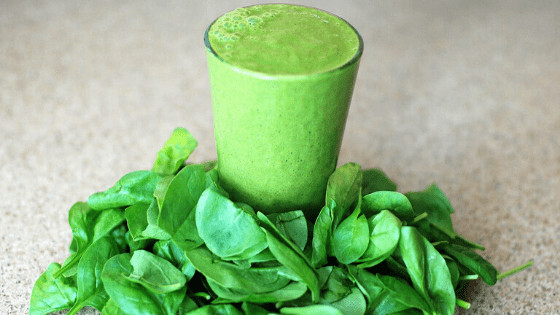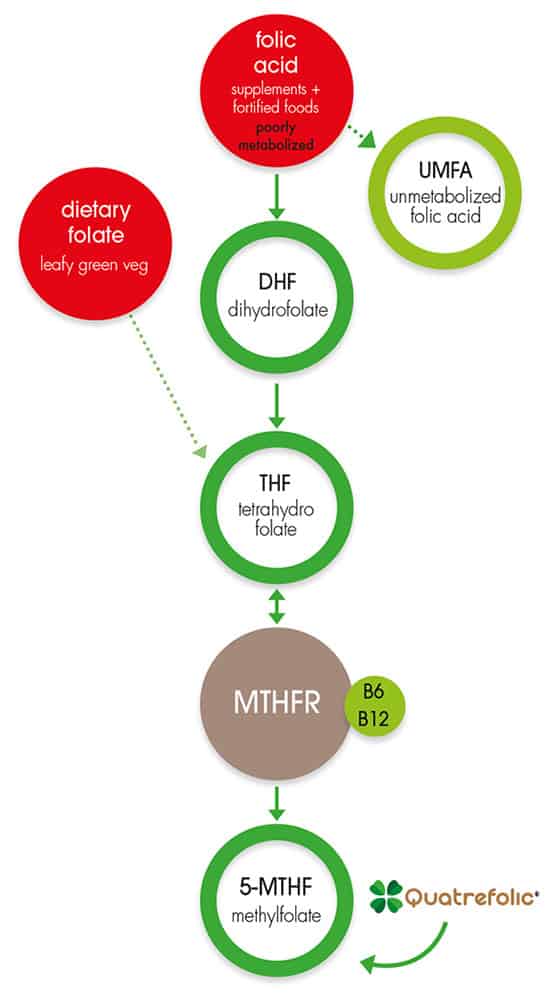
02 Nov Folate Vs Folic Acid
Ever wonder what the difference is between folate vs folic acid? I never really knew the difference until I went to school for nutrition, because everything you’ll ever hear from most doctors and the government programs that are related to food, like MyPlate (I’m inserting my eyeroll here), talk about folic acid. Then the MTHFR mutation topic became booming and now you’ll hear so much about methylfolate! So, I’m here to break it down for you!
Folic Acid
Folic acid is the synthetic version. And hey, I’d be the first to tell you that synthetic doesn’t always mean bad. Folic acid was made to help fortify processed foods in the late 1990’s to reduce birth neural defects in pregnant women who may not have been able to eat a healthy diet.
To break down folic acid into the useable form of methylfolate, there are a couple of enzymes help the folic acid through this process: dihydrofolate reductase and methylenetetrahydrofolate reductase. Half of the population have the MTHFR gene mutation, which inhibits this enzyme from working properly. Ultimately, leaving unmetabolized folic acid in the serum and a decrease of methylfolate.
Certain drugs, like Methotrexate (chemo agent), trimethoprim (antibiotic), and anti-parasitic drug actually inhibits the dihydrofolate reductase enzyme that further can inhibit folic acid going into the bioactive form of folate.
Methylfolate
The methylated form of folate, methylfolate, which is what is commonly found in real food sources, is the predominant folate in our blood and tissues. In the image below, you can see how intaking a dietary folate skips the first process of breaking folic acid down with the enzyme dihydrofolate reductase.
Not shown in the picture is that dietary folate can already come methylated too! This totally bypasses that conversion to methylfolate.

In Clinical Therapeutics, it showed that pregnant women had a lower risk of developing anemia using L-methylfolate versus folic acid. The American Journal of Clinical Nutrition also studied that food sources of folate had bioavailability of 80% compared to folic acid.
Methylfolate is also the biggest donor to take homocysteine to methionine. Too much homocysteine can increase your risk of cardiovascular disease.
Measuring Your Folate Status
It’s recommended that you actually take a look inside your cell to get a proper folate status reading. In the blood, the folate doesn’t fluctuate through the cell’s life as much as folate in the serum. Folate in the serum fluctuates daily and it doesn’t give a good picture of the folate levels in the tissues.
Folate Sources In Food
Of course, I recommend starting with your diet first to raise your folate levels. Through our diet, we are exposed to monoglutamate folate and polyglutamate folates (mostly the polyglutamate!). In our intestines, we break these down for absorption! You’ll want to eat these foods and try not to cook them for more than 30 minutes, as prolonged cooking can destroy folate.
- Spinach | Leafy Greens
- Broccoli
- Avocado
- Asparagus
- Brussel Sprouts
- Liver
- Legumes | Lentils
- Mango
Do you have further questions about folate vs. folic acid? Reach out to us @nuvitruwellness on Instagram + Facebook and let’s start the convo!.


